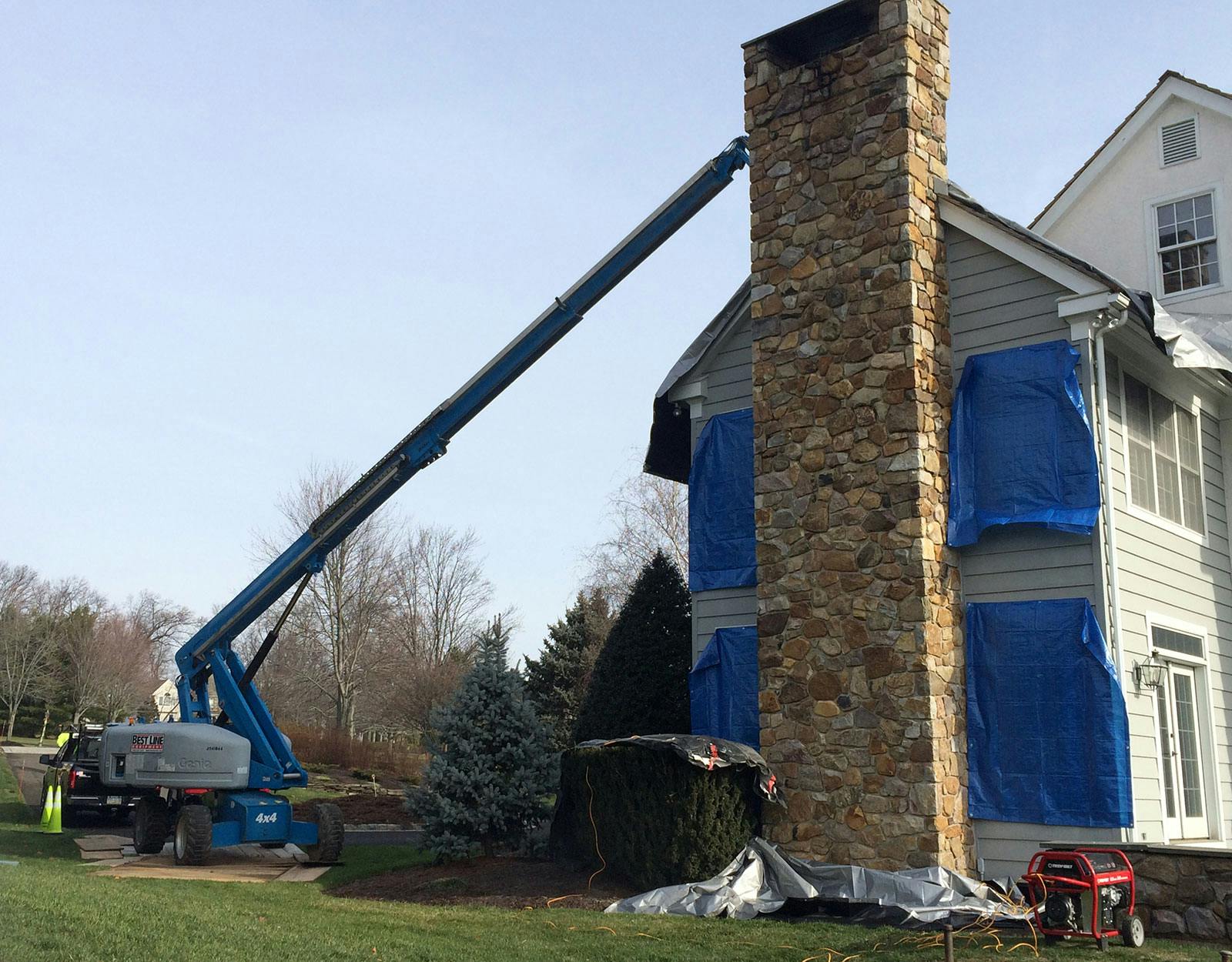A leak of any kind in your home is bad news. One place homeowners don’t usually expect to find leaks is within their chimneys. We tend to associate leaks with piping. However, chimney leaks do happen and it’s important to get the cause repaired before the damage spreads.
The three big causes of chimney leaks are masonry damage, cap or crown damage, and issues with flashing. Ultimately, these problems will need to be fixed by chimney professionals. But, what steps should you take to prepare?
First, you can attempt to identify any external damage on your own. Second, you should schedule an inspection of your chimney to find out the severity of the damage and what options are available to correct it. And third, you should hire chimney experts to restore your chimney back to like-new condition.
Identifying External Damage

We don’t recommend anyone go up onto a roof without the proper training and equipment. But, depending on your home, you may be able to spot signs of trouble from the ground.
The four most common types of chimney damage that lead to leaks are masonry damage, cap damage, crown damage, and flashing damage. You probably won’t be able to tell if there’s any damage to your chimney’s crown. But, the other three may be visible from down below.
It can be difficult to spot minor masonry damage from the ground. However, one major type of masonry damage is called spalling. If you have a brick chimney and it looks like layers of brick are crumbling off the exterior, that’s spalling. This damage leads to cracks and holes that can let water in. Eventually, this will also cause your chimney to no longer be structurally sound.
The chimney cap is typically made of metal and sits on the very top. It’s what keeps rain, pests, and debris out of the flue. If your cap is noticeably damaged or missing entirely, there’s a good chance that’s at least partially causing your leak. And even if it’s not, it’s a good idea to have it fixed to prevent future damage.
Flashing takes the form of metal that covers the connection point between the chimney and the roof. You may be able to see some of this metal creeping up the bottom of your chimney. If you have a pretty clear view of the point at which the chimney connects to the roof and you don’t see anything, it could mean your flashing is missing.
Scheduling a Professional Inspection

If you weren’t able to identify damage to your chimney, a professional inspection will be able to uncover the source of the leak. And if you were able to identify the damage, scheduling a professional inspection will help to determine the extent of the damage and the repairs required.
When you hire experts to perform an inspection of your chimney, they will inspect it from top to bottom, inside and out. This is important even if you could clearly see that the issue was something relatively simple to fix, like a missing cap.
While it’s true that replacing the cap may fix the leak immediately, there’s a good chance that there’s more damage you can’t easily see. What about pests or debris that may have entered the chimney while the cap was missing? And what if the missing cap wasn’t the only thing contributing to the leak?
The thing about damage to homes is that it tends to lead to more damage. What began as a minor leak in your chimney could lead to rot in your walls. This is why it’s so important to identify – and fix – sources of damage as soon as possible.
After your chimney inspection is complete, the contractor will let you know the extent of the damage, the necessary repairs, and the cost and timeline to get the work done.
Restoring Your Chimney

If you’re lucky, the leak will be minor, simple to fix, and won’t have caused additional damage. However, if there’s extensive damage to your chimney, repairs won’t be enough; restoration will be necessary.
Chimney restoration involves rebuilding the structure of the chimney. First, the stone, stucco, or brick comes off. Then, any underlying damage is repaired, such as replacing rotten wood. And finally, the exterior of the chimney is rebuilt and sealed to protect against future damage.
When your chimney needs to be restored, it’s important to hire contractors with the right experience. Stucco, stone, and brick (masonry) require special knowledge and skills to install properly. And if the flashing around your chimney is installed incorrectly, it can actually divert water toward vulnerable places instead of away from them.
McNamara Masonry Chimney Restoration
A leaky chimney isn’t something any homeowner wants to come across. But, if you do, it’s important to take steps toward resolving the leak as soon as possible. The longer a leak is left alone, the more damage it can do to your home.
First, you can attempt to confirm that your chimney really is the source of the leak by looking for obvious signs of damage. Next, you should hire a team of chimney experts to perform a thorough inspection to determine the extent of the damage. And lastly, you should have your chimney repaired or restored to fix the source of the leak and prevent future damage from occurring.
Homeowners throughout the Delaware Valley trust the professional team of McNamara Masonry Chimney Restoration with all their chimney needs. Contact us today to schedule an inspection of your chimney and a quote for repairs or restoration.
